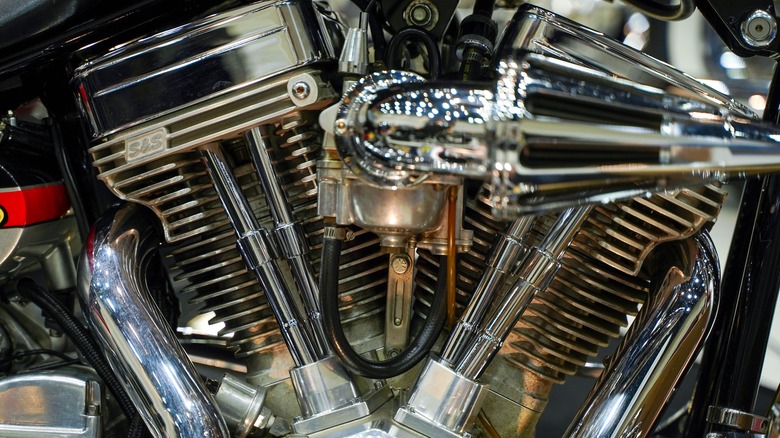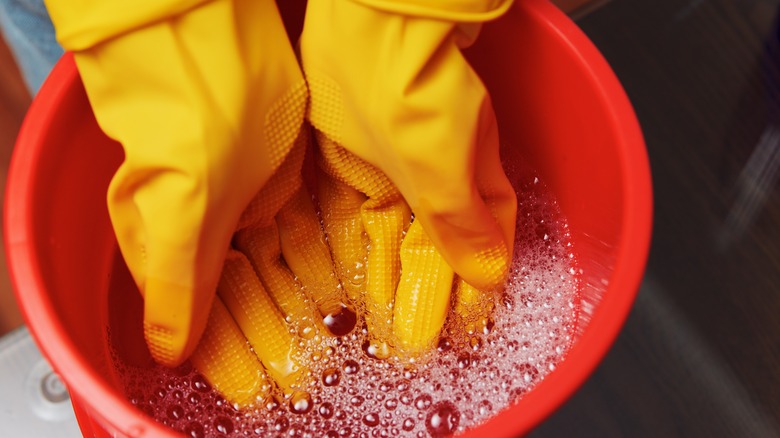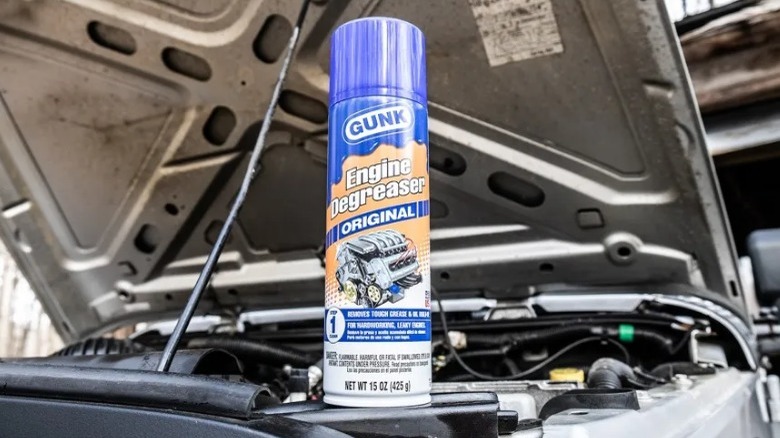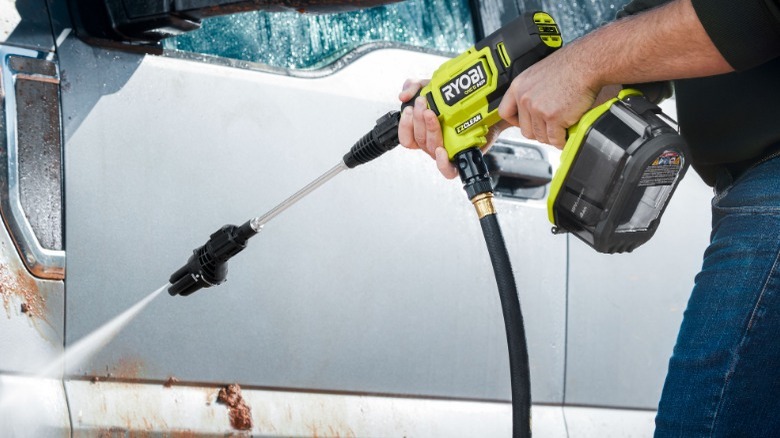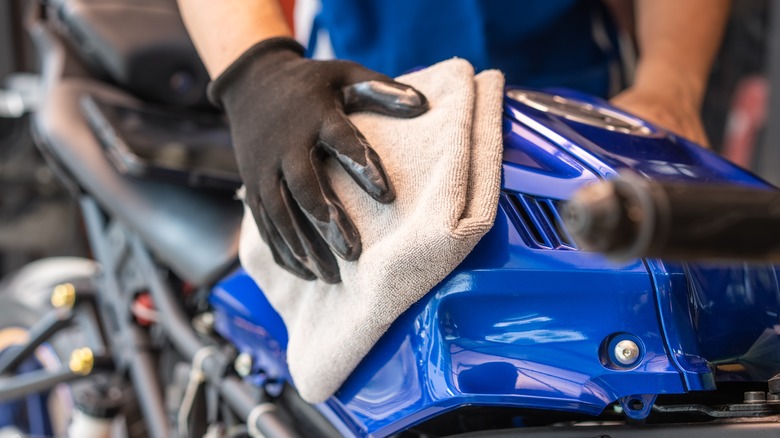The Best Ways To Clean And Polish Motorcycle Engine Fins
We may receive a commission on purchases made from links.
One of the most distinctive elements in your motorcycle's engine compartment is the fin stack. These steel blades are used to help dissipate the heat of combustion from your motorcycle's engine, but they can also be an eye-catching part of the bike's overall design. Sometimes they might be painted or coated in chrome, while other bikes might leave the raw steel of the engine casing exposed for the world to see.
No matter the outer shell, however, engine fins have a tendency to get dirty. Air is supposed to pass through the fins by design, and so all kinds of dust, dirt, and debris can coat them. This can be unsightly, and in extreme cases, can insulate the fins so that they don't adequately dissipate the engine's heat. You'll definitely want to clean and polish these fins if you're looking to detail your bike like a pro.
Cleaning and polishing your motorcycle's engine fins can be a bit more tricky than cleaning your car's engine bay. The fins themselves can be difficult to access if you don't want to remove them from the bike, and cleaning between them can be more than a little frustrating. It's also important to know what kinds of solvents and polishes to use. Engines can get extremely hot, so you definitely want to be sure not to use anything with the potential of being flammable. Here are a few of the best ways to clean motorcycle fins.
Clean them off with dish soap and water
If your motorcycle engine fins are still in good condition and are just a little dirty, then one of the simplest ways to clean them is with a little dish soap and water. It's a simple thing, but I've done this on my bike several times and it's always worked wonders. Most dish soaps, like Dawn, have mild degreasing properties that help separate oils that are stuck on surfaces. They also include mild alcohols that are designed to make the objects they clean dry quickly, without residue or water spots. The features that make these soaps good for washing dishes are the very same ones that also make them great for washing motorcycle engine fins.
All you need to do is take a bucket of warm, soapy water and then use a small, moderately firm bottle brush to get in between each of the fins. Keep scrubbing like this until the fins appear clean. Then simply hose them out and let them air-dry. This is a cheap, simple method that won't scratch paint or blemish metal, but it's only really useful for cleaning superficial dirt and dust. You'll still need to polish the fins if you want them to really shine, and some of the more stubborn stains may require a more potent solution.
Degreaser to get rid of oil
Oil is the lifeblood of the combustion engine, but it's also messy. Seals eventually wear out and even small oil leaks can lead to messy stains that bake into a thick grease. This will cling to the engine fins, staining them with a hard, sticky veneer that just won't let go. As anyone who's ever cleaned an oven or a grill will tell you, soap will only get you so far.
For these situations, you want a special engine degreaser formula like those made by Gunk or WD-40. These loosen the chemical bonds of oil, grease, dirt, grime, and tar from the metal underneath. There will be instructions on the can for how long to leave the solvent on the engine fins, but it usually only takes about 5-10 minutes. Once it's done, you should be able to simply wipe or hose away all but the most stubborn stains. Just be careful not to spray the degreaser on a hot or running engine, as many of them are flammable.
Some brands, like BikeBrite, Muc-Off, and Sonax also sell 2-in-1 cleanser and degreaser solvents that will clean your engine fins and get rid of any residual grease and oil stains all in one wash, though some of them tend to be a bit more expensive.
Pressure washers get hard-to-reach places, if you're careful
There are a lot of nooks and crannies in your motorcycle's engine fin stack that are difficult to reach, even with a slender scrubbing tool like a bottle brush. This is where a pressure washer can really come in handy. You can use the wand to simply blast away dirt and grime, even the bits that have made their way into the deepest recesses of your engine's fins stack. This is doubly effective if you do it after allowing a soap or engine degreaser to soak into the grime before blasting it with the pressure washer. Muc-Off even makes a cleaning agent specifically for motorcycles that's biodegradable.
You want to be very careful when using a pressure washer on a fin stack that is still attached to your bike, however. The fin stack itself is made of steel, but motorcycles tend to have a lot of exposed cables and wiring that can easily be damaged by too much pressure. You probably want to use a fairly low-powered washer, with Cycle World recommending choosing one that puts out less than 3,000 PSI. Even then, you'll want to be careful to only target the engine, and to let the bike thoroughly dry before starting it up again.
Polish till it shines
Once the engine fins are clean, you may also wish to give them a good polish. Painted motorcycle engines can always be re-painted, but exposed metal engines will shine much brighter with a bit of buffing.
You'll want to be careful not to use anything flammable, as the engine fins will get very hot. There are several different brands of polish available that are designed for use on high-heat engine parts. Many of them are even made specifically for different kinds of finish. Bike Brite, for instance, makes a spray-on polish that's made for black powder-coated engines and parts. That said, most people are probably looking for a good silver-colored metal polish.
Gunk makes an aerosol polish that is certainly convenient for getting into the spaces between the engine fins. Chemical Guys, Autosol, and Mothers all make more traditional paste polishes. These need to be applied manually. Either way, you'll need something to buff it into the metal. A small flap wheel can be used in a rotary tool in order to buff the spaces between the fins. This method will offer more power, but it can be tricky to get all the way into the deepest corners. If you aren't afraid of using a little elbow grease, you can always stretch a microfiber cloth over a paint stick or ruler and use that to get between the fins.
